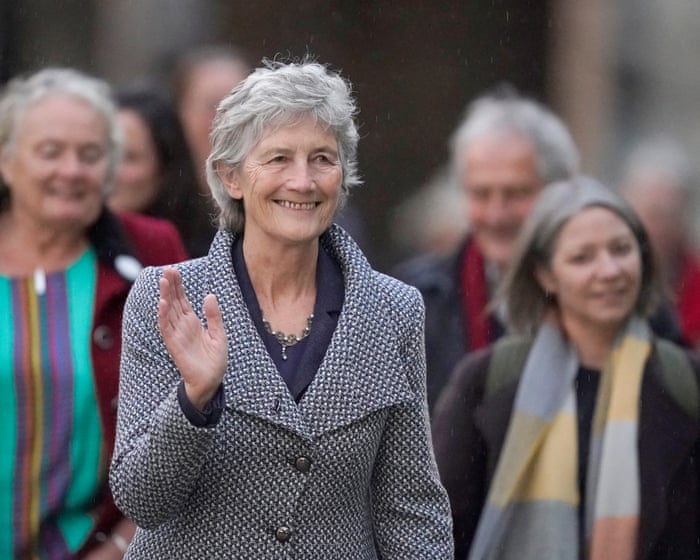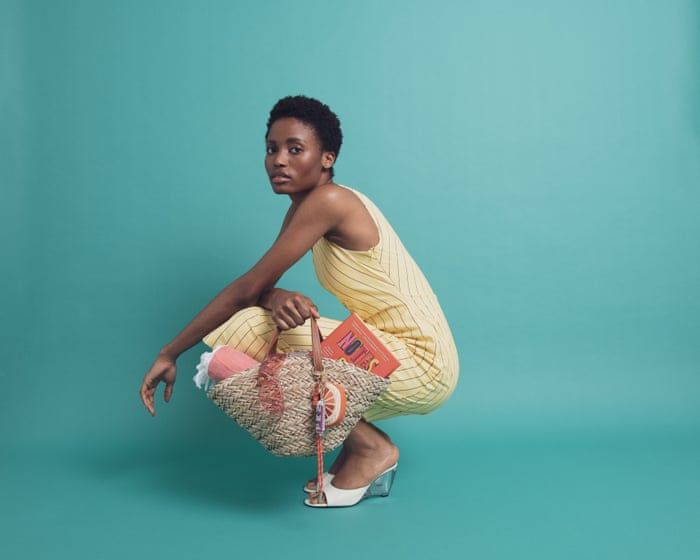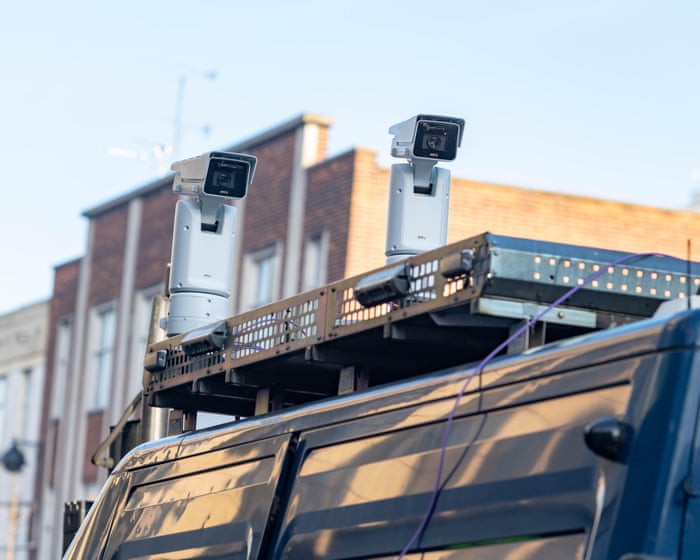The secret to becoming Ireland’s president is as elusive as the recipe for Coca-Cola, yet many voters believe Catherine Connolly possesses it. This left-wing independent MP, who carries the serene demeanor and simple look of a thoughtful nun, has secured a decisive win to replace the beloved outgoing president, 84-year-old poet Michael D. Higgins. Her selection as the republic’s 10th head of state in a race so strange it could have been written by Basil Fawlty has left the two main government parties stunned.
Fianna Fáil’s candidate, Jim Gavin, personally chosen by Taoiseach Micheál Martin for his achievements in sports and the Gaelic Athletic Association, dropped out after it was revealed he hadn’t repaid €3,300 owed to a former tenant since 2009. Gavin’s name stayed on the ballot as a ghost candidate. Martin must regret the day last summer when Live Aid founder Bob Geldof called seeking the party’s nomination, only for him to decline because he had already settled on Gavin.
The established media also has egg on its face. Sinn Féin, the largest opposition party, announced last month it was backing Connolly’s candidacy. When party leader Mary Lou McDonald called this decision a “gamechanger,” commentators mocked it as “some gamechanger.”
The five left-wing parties in the Dáil—Sinn Féin, Labour, the Social Democrats, People Before Profit, and the Greens—formed an unprecedented alliance to support Connolly’s independent run. Her victory has shattered the myth that the divided left is an insurmountable barrier to Sinn Féin ever leading a government.
Connolly’s election also defies the trend in an EU shifting rightward amid rising racism, anti-feminism, and militarism.
Connolly wasn’t a flawless candidate, but she had two major advantages. For the past 35 years, since Mary Robinson became Ireland’s first woman and first left-wing president, voters have enjoyed choosing an outsider with an edge—even a touch of quirkiness—for the nation’s highest office. This seems to align with a national self-image of nonconformity, though it rarely shows in parliamentary elections. One of the best-selling gifts during Higgins’ presidency was a knitted tea cozy modeled after him.
Connolly’s bigger advantage, however, was the ABH (Anybody But Humphreys) factor. Heather Humphreys, a pleasant former minister from the old school of talking much but saying little, was coaxed out of retirement to represent Fine Gael after their first choice, ex-EU commissioner Mairead McGuinness, withdrew for health reasons. When Humphreys’ touted potential to unite the island as a Presbyterian living near the border failed to gain traction, Fine Gael launched an American-style negative campaign to stop her slide in the polls. An online video accused Connolly of hypocrisy for criticizing banks over Ireland’s housing crisis, given she had represented banks in court as a barrister before her 2016 election to the Dáil. The tactic backfired when many voters condemned Fine Gael’s Trump-like strategies.
Connolly is the oldest of 14 children and grew up in a council house in Galway. She is anti-war, anti-imperialist, pro-Irish reunification, and an advocate for disability rights. Like her predecessor, she has criticized the EU’s inaction during Israel’s violence in Gaza. Her more daring statements—that France and the UK are untrustworthy due to their arms industries and comparing Germany’s rearmament to 1939—made some voters cautious about what she might say as president. Yet, that risk seemed better than reverting to old-style, predictable politics.During previous presidencies, the office-holders consistently followed the government’s lead to such an extent that they became irrelevant to the public.
Connolly, who is both a psychologist and a lawyer, often avoided direct answers during her campaign when asked about a contentious trip she took to Syria under Assad’s rule and her hiring of a dissident republican in the Dáil who had been imprisoned on firearms charges. She defended the latter as part of her dedication to rehabilitating prisoners.
At 68, she is older than Humphreys but resonated more with younger voters, who were drawn to her grassroots, peace-oriented campaign. Her proficiency in Irish, the country’s primary official language, stood in stark contrast to Humphreys’ reluctance to speak it publicly. After years of shunning the native language, speaking Irish has now become fashionable among a generation influenced by groups like Kneecap.
While her supporters are celebrating her victory, there is also a sense of national apprehension. A remarkably high number of spoiled ballots in Friday’s election—surpassing Humphreys’ vote count in some regions—occurred alongside two nights of violent riots outside a Dublin center housing asylum seekers and war refugees last week. Left-wing parties, which united behind Connolly’s candidacy, are expected to clash again when a by-election is called to fill her vacant Dáil seat. However, the groundwork has been laid for future left-wing collaboration through a vote-transfer agreement in the next general election, potentially giving voters a clear choice between a right-leaning or left-leaning government.
Martin’s misstep in choosing Fianna Fáil’s absent candidate was mirrored by its coalition partner, Fine Gael (led by Deputy Prime Minister Simon Harris), when they selected Humphreys without an internal party process. The outcome is a resounding defeat. Rumblings of dissatisfaction within both parliamentary parties are already fueling speculation about how long the two leaders can remain in power before the next general election, which must be held by January 2029 at the latest.
Despite the presidency being largely ceremonial and lacking political power, the effects of this election are likely to linger long after Connolly’s official inauguration at Dublin Castle next month.
Justine McCarthy is a columnist with the Irish Times.
Frequently Asked Questions
Of course Here is a list of FAQs about Catherine Connollys election as Ceann Comhairle framed around the fresh dynamic it introduces to Irish politics
General BeginnerLevel Questions
1 Who is Catherine Connolly
Catherine Connolly is an Independent Teachta Dála or member of parliament for the Galway West constituency She is known for her strong principled stance on social justice housing and transparency in government
2 What position was she just elected to
She was elected as the Ceann Comhairle This is the chairperson of Dáil Éireann the Irish parliaments lower house The role is similar to the Speaker in other parliamentary systems
3 What does the Ceann Comhairle do
The Ceann Comhairles main job is to ensure debates in the Dáil are fair orderly and that all TDs follow the rules They are meant to be strictly impartial once elected
4 Why is her election considered a fresh dynamic
For decades the position has traditionally been filled by a TD from one of the two largest political parties Catherine Connolly is an Independent known for challenging the government so her election breaks that longstanding tradition and signals a potential shift in how the Dáil operates
The Impact Significance
5 What are the main benefits of having an Independent as Ceann Comhairle
The primary benefit is the perception of greater impartiality and independence from the usual party politics It can lead to a more balanced Dáil where backbenchers and smaller parties feel they have a fairer voice
6 How does this change the power balance in the Dáil
The government coalition loses one of its voting TDs Because the Ceann Comhairle only votes to break a tie the governments working majority becomes slightly smaller making it harder to pass legislation by a narrow margin
7 What challenges might she face in this new role
The biggest challenge will be transitioning from being a frequent and vocal critic of the government to a completely impartial referee She will have to set aside her own strong political views to manage




